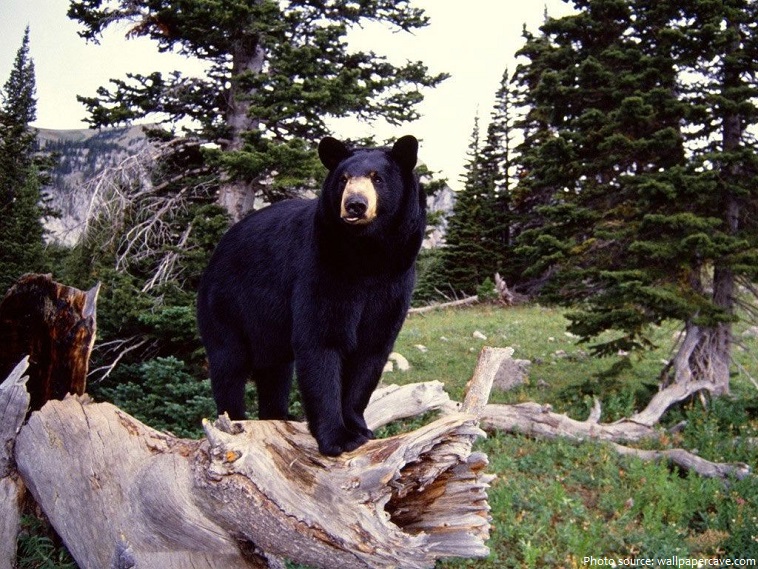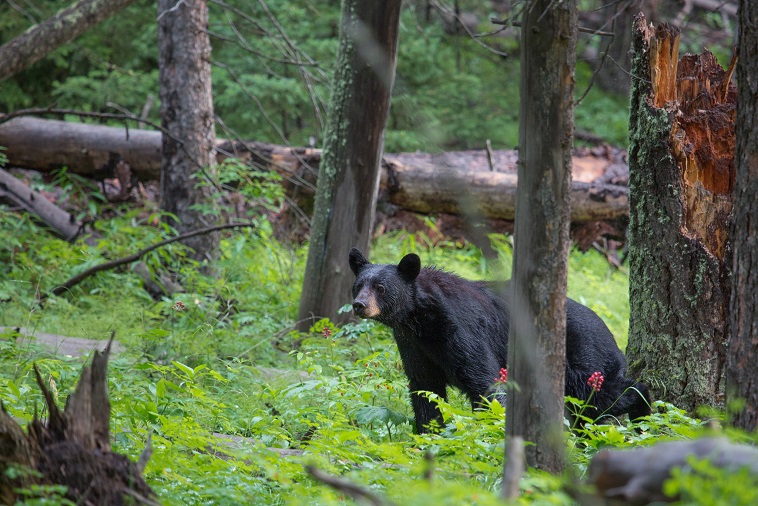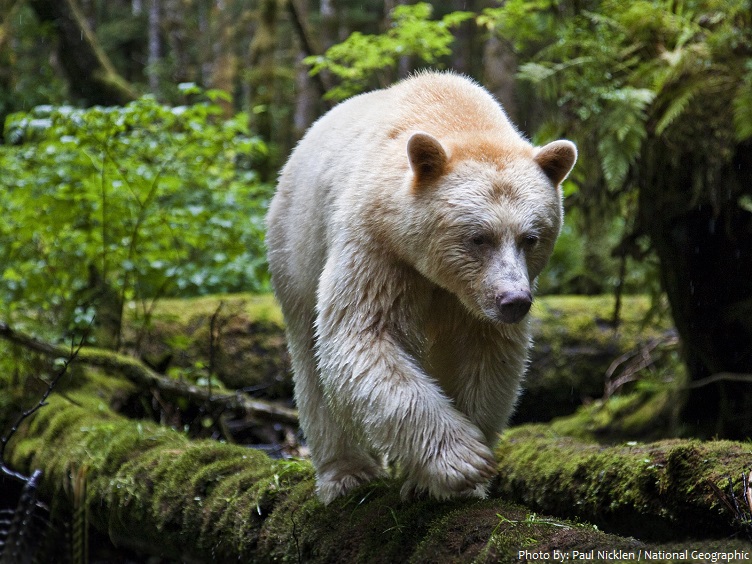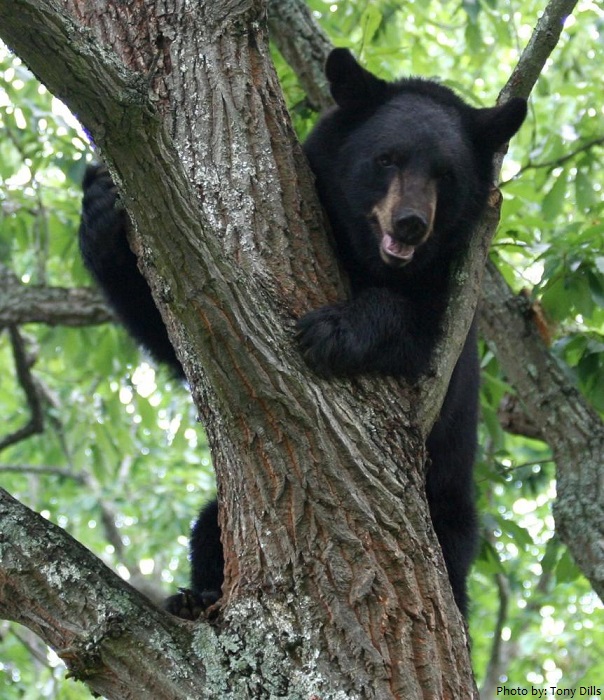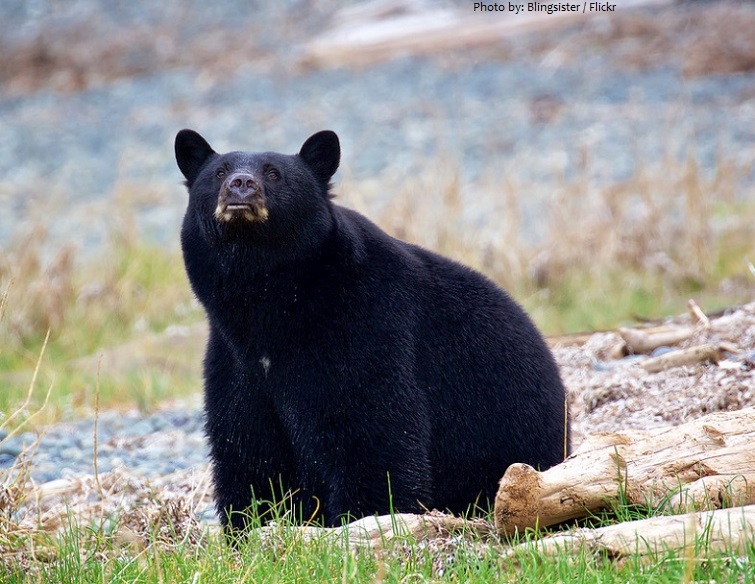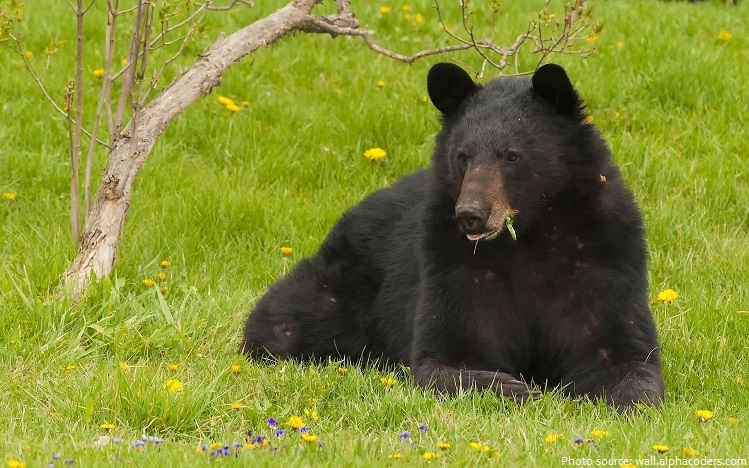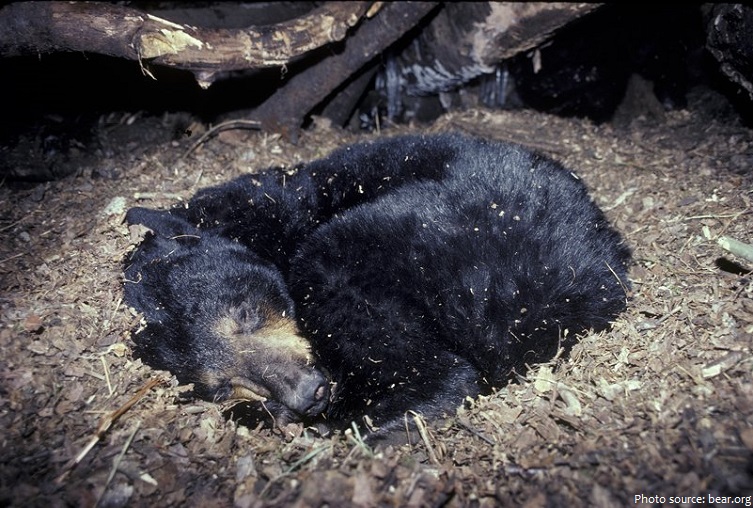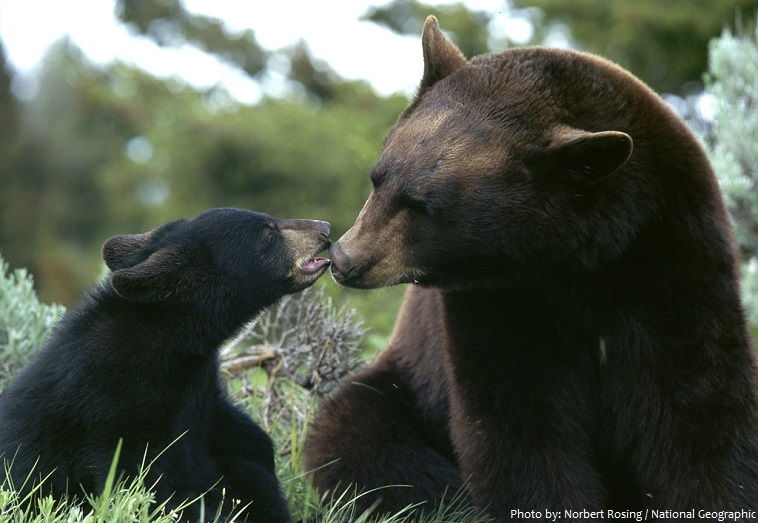The American black bear (Ursus americanus) is a medium-sized bear native to North America.
It is the smallest of the three bears species found in North America.
They are found in Alaska, much of Canada and the United States, and extend as far south as northern Mexico.
Black bears are extremely adaptable and show a great variation in habitat types, though they are primarily found in forested areas with thick ground cover and an abundance of fruits, nuts and vegetation. In the northern areas, they can be found in the tundra, and they will sometimes forage in fields or meadows.
This species also occurs over a range of altitudes, from sea-level to elevations of up to 3,500 meters.
The average lifespan in the wild is about 20 years. The record age of a wild specimen was 39 years, while that in captivity was 44 years.
Adults typically range from 120 to 200 centimeters (47 to 79 inches) in head-and-body length, and 70 to 105 centimeters (28 to 41 inches) in shoulder height. The typically small tail is from 8 to 18 centimeters (3.0 to 7.0 inches) long.
All bears, including black bears, are sexually dimorphic—meaning adult males are much larger than adult females. A large male black bear can exceed 270 kilograms (600 lbs) in weight while females seldom exceed 90 kilograms (200 lbs).
The biggest wild American black bear ever recorded was a male from New Brunswick, shot in November 1972, that weighed 409 kg (902 lb) after it had been dressed, meaning it weighed an estimated 500 kg (1,100 lb) in life, and measured 2.41 m (7.9 ft) long.
Despite their name, black bears show a great deal of color variation. Individual coat colors can range from white, blond, cinnamon, or light brown to dark chocolate brown or to jet black, with many intermediate variations existing. Approximately 70% of all black bears are black.
The black bear exhibits considerable variation in coloration, both among individuals from a single litter, and between populations from separate geographical regions.
The black bear’s coat has lots of layers of shaggy fur, which keeps it warm in cold winter months.
Black bears have relatively short claws which enable them to climb trees. Unlike cats, the claws are non-retractable.
They move in a rhythmic, sure-footed way and can run at speeds of 40–50 km/h (25–30 mph). However, they cannot maintain this pace for long.
American black bears are excellent and strong swimmers, doing so for pleasure and to feed (largely on fish).
A black bear has better eyesight and a better sense of hearing compared to humans. Their keenest sense is the sense of smell, which is about seven times greater than a dog‘s.
American black bears may be active at any time of the day or night, although mainly forage by night. Bears living near human habitations tend to be more extensively nocturnal and bears living near brown bears tend to be more extensively diurnal.
American black bears are omnivores. Up to 85% of the black bear’s diet consists of vegetation. They eat plants like skunk cabbage, grasses, leaves ,roots, buds, shoots, berries, fruits, acorns and nuts. They also eat bees, ants, termites, eggs, fish and mammals — including carrion. They are also very fond of honey.
American black Bears are solitary animals except for mothers with cubs, during the breeding season or when they come together at feeding sites.
American black bears roam large territories, though they do not protect them from other bears. Males might have a home range of 40 to 200 square kilometers (15 to 80 square miles).
American black bears often mark trees using their teeth and claws as a form of communication with other bears, a behavior common to many species of bears.
When winter arrives, black bears spend the season dormant in their dens, feeding on body fat they have built up by eating ravenously all summer and fall. They make their dens in hollow trees or logs, under the root mass of a tree, in rock crevices, or even high in a tree in warmer climates. Hibernation in black bears typically lasts 3–8 months, depending on regional climate.
The breeding period usually occurs in June and July, though it can extend to August in the species’ northern range. The gestation period lasts 235 days, and litters are usually born in late January to early February. Litter size is between one and six cubs; typically two or three. Cubs are dependent on their mother’s milk for 30 weeks, and will reach independence at 16–18 months.
It is estimated that there are more than 600,000 American black bears living in the wild. In the United
States, there are estimated to be over 300,000 individuals.
The IUCN-status of the American black bear is listed as ‘Least Concern’. Some populations in the east of the United States are however threatened.
Although an adult bear is quite capable of killing a human, American black bears typically avoid confronting humans when possible.
Historically, black bears were hunted by both Native Americans and European settlers.
Black bear meat had historically been held in high esteem among North America’s indigenous people and colonists.
Some Native American tribes, in admiration for the black bear’s intelligence, would decorate the heads of bears they killed with trinkets, and place them on blankets.
Black bears feature prominently in the stories of some of America’s indigenous peoples. One tale tells of how the black bear was a creation of the Great Spirit, while the grizzly was created by the Evil Spirit.
Morris Michtom, the creator of the teddy bear, was inspired to make the toy when he came across a cartoon of Theodore Roosevelt refusing to shoot a black bear cub tied to a tree.
